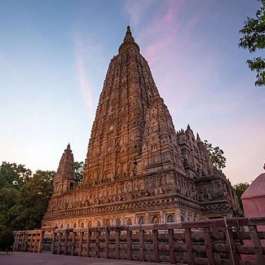
It may be leaning toward sweltering midsummer where I live, but thoughts of autumn knock on the door. When I was a child, the autumn months used to leave me wistful. As the weather became colder and the days shorter, it seemed like everything was changing for the worse. On top of this, it seemed that the trees were dying. At least, I thought they were dying as their leaves changed color and fell to the ground. The adults in my life said the trees were “just sleeping,” but I didn’t believe them. “How could a tree lose all of its leaves and stay alive?” I wondered.
As I grew older and a few more autumns passed, I realized that those adults were partially correct. Yes, the trees were sleeping, withdrawing nutrients from their branches and storing up sugars for the winter months. But other things were happening as well. I learned that leaves aren’t truly green. They only look that way because they are filled with chlorophyl. Only in the fall, when the chlorophyl dries up and the leaves are about to die, do we see their true colors.
[Death, in] its innermost essence is not contrary to us (as one may occasionally surmise), but it is more knowing about life than we are in our most vital moments. I always think that such a great weight with its tremendous pressure somehow has the task of forcing us into a deeper, more intimate layer of life so that we may grow out of it all the more vibrant and fertile.
(Rainer Maria Rilke’s Letters on Grief [The Paris Review])

When leaves fall to the ground, they provide habitats for a host of insects in need of resting places for the winter. Leaves insulate the ground so that earthworms in the soil don’t freeze. Finally, when the leaves break down and decompose, they fertilize the soil, adding nutrients to support the growth of the trees and other plants in the spring.
As I learned more about the natural processes of the world, my childlike unawareness was replaced with knowledge and I gained an appreciation for the impermanent nature of trees. As we age, Buddhism helps us gain that same appreciation for the impermanent nature of people. As humans, by nature, we are born, grow old, fall sick, and eventually die. In the beginning, growing older is a good thing. It’s a transition that adds richness and complexity to our lives. At 16 we can drive, at 18 we leave home for college, and at 25 we can rent a car! But there also inevitably comes a tipping point when life stops giving us things and starts to take them away.

Aging means our bodies start to break down. Illnesses may become more frequent, and we may struggle to keep up with new technology or popular culture. These changes are unpleasant at best, and at worst can be a source of immense suffering. This suffering is multiplied by a secular world rooted in ignorance; a world that tells us our bodies should never change. According to the advertisements that appear on our digital devices, every 50-year-old should look like they’re 25 and every sick person just needs to adopt a more positive mindset or buy the latest supplements.
By contrast, Buddhism teaches that change is a natural, inescapable part of life. Everything in the universe, including people, is in a constant state of transition. If we can learn to accept life’s transitions, we can appreciate them in the same way that a child might appreciate the poignant beauty of fallen leaves. When we approach the aging process with this newfound wisdom, we find beauty amid achy joints and graying hair.

Our youthful vigor is replaced by a host of life experiences that help us make better, more considered choices. We realize that a quiet evening with good friends can be more enjoyable than a night out on the town surrounded by strangers, or a taking a fancy trip. And we find more time for spiritual practice as we let go of outdated desires.
More than that, as the autumn leaves fall from our proverbial tree, we realize that they’re making room for new growth to emerge—even wisdom. This may look like taking up a new activity or deepening our relationship with a friend or partner. When we approach the aging process with a mind of acceptance, the world opens up to us. And the suffering that’s normally associated with the process of birth, aging, sickness, and death can diminish. Instead, it is replaced by quiet joy and contentment as we look over the fallen leaves of our past and look forward to the new growth that will emerge in our future, however limited.

Like a child gazing at the orange and red leaves of autumn, who now understands they are harbingers of good days to come after winter, we experience aging as evidence that life has new, worthy challenges in store. And when the day finally comes that our human shell stops its worldly function, we can let it go without fear. If we have cultivated meditation, we know that the end of one life leads to the beginning of another. In the same way that fall leads to winter and then toward a new spring.
Related features from BDG
Soothing the Fear of Death: Lessons from Nakula’s Mother
How to Overcome the Fear of Death
Acceptance and Autumn Leaves
“At the Still Point of the Turning World”
Metta Carries Wood, Mops Water
Meaning, Part Two













Thank you for this beautiful reflection. Sarah. I really feel it as I look out my window and see the first of the cottonwood leaves turn gold and all to the ground. And as my birthday approaches later in the fall, my aging body giving me signals of change.